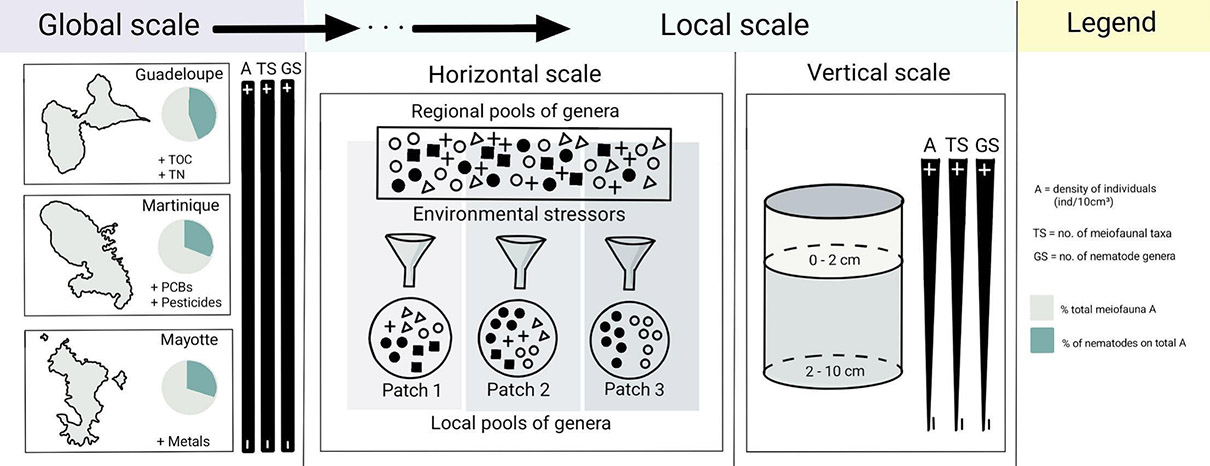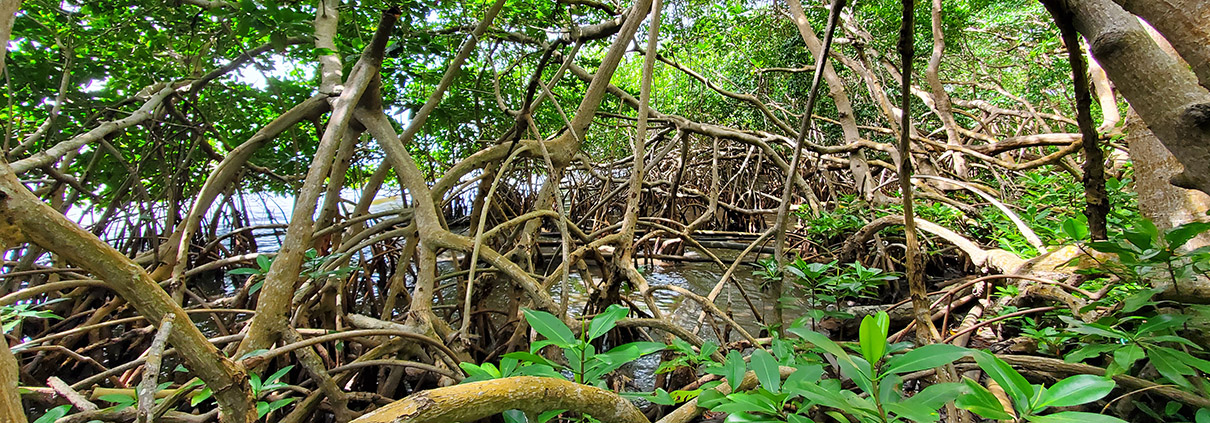Deciphering environmental forcings in the distribution of meiofauna and nematodes in mangroves of the Atlantic-Caribbean-East Pacific and Indo-West Pacific regions
Abstract
Mangroves develop under environmental conditions and anthropogenic pressures whose impact on benthic meiofauna remains poorly understood. It is unclear how meiofauna communities are structured according to local sedimentary conditions. This study was designed to characterize the community structure of meiofauna and nematodes (dominant taxa) and the associated environmental forcings in intertidal mangrove sediments from Mayotte (Indo-West-Pacific), Martinique and Guadeloupe (Caribbean). Sediment cores were sampled at the end of the dry season at low tide on adult mangrove stands with similar immersion time. In each sediment layer, we analyzed redox potential, pH, porewater salinity, grain size, organic matter, metals, organic contaminants, prokaryotes and meiofauna. Our results show that sediments far from cities and agricultural fields trapped site-specific contaminants due to local water transport processes. Some metals, PAHs or pesticides exceeded toxicity thresholds in most of the studied stations, thus being harmful to benthic fauna. The sedimentary environment acts as a filter selecting specific meiofauna communities at station scale only in the Caribbean. In Mayotte, horizontal homogeneity contrasts with vertical heterogeneity of the sedimentary environment and the meiofauna. Nematode genera showed particular distribution patterns horizontally and vertically, suggesting the presence of sediment patches suitable for a restricted pool of genera on each island. Results in the Caribbean are consistent with nested diversity patterns due to environmental filtering. Conversely, horizontal homogeneity at Mayotte would reflect greater dispersal between stations or more spatially homogeneous anthropogenic pressures. The nematode genera present at depth may not be the most specialized, but the most versatile, capable of thriving in different conditions. Terschellingia and Daptonema showed contrasted responses to environmental forcing, likely due to their versatility, while Desmodora showed uniform responses between study areas, except when toxicity thresholds were exceeded. Our results emphasize that a given genus of nematode may respond differently to sedimentary conditions depending on sites.
Graphical abstract

Highlights
-
Metals, PCBs, PAHs or pesticides exceed toxicity thresholds on each island.
-
Meiofauna and nematode density significantly decreased over depth.
-
The nematode community is structured at the scale of the station in all islands.
- Nematode communities form local patches with highly different genus composition.
- Site-specific variability of nematode response to multiple stressors
Référence





